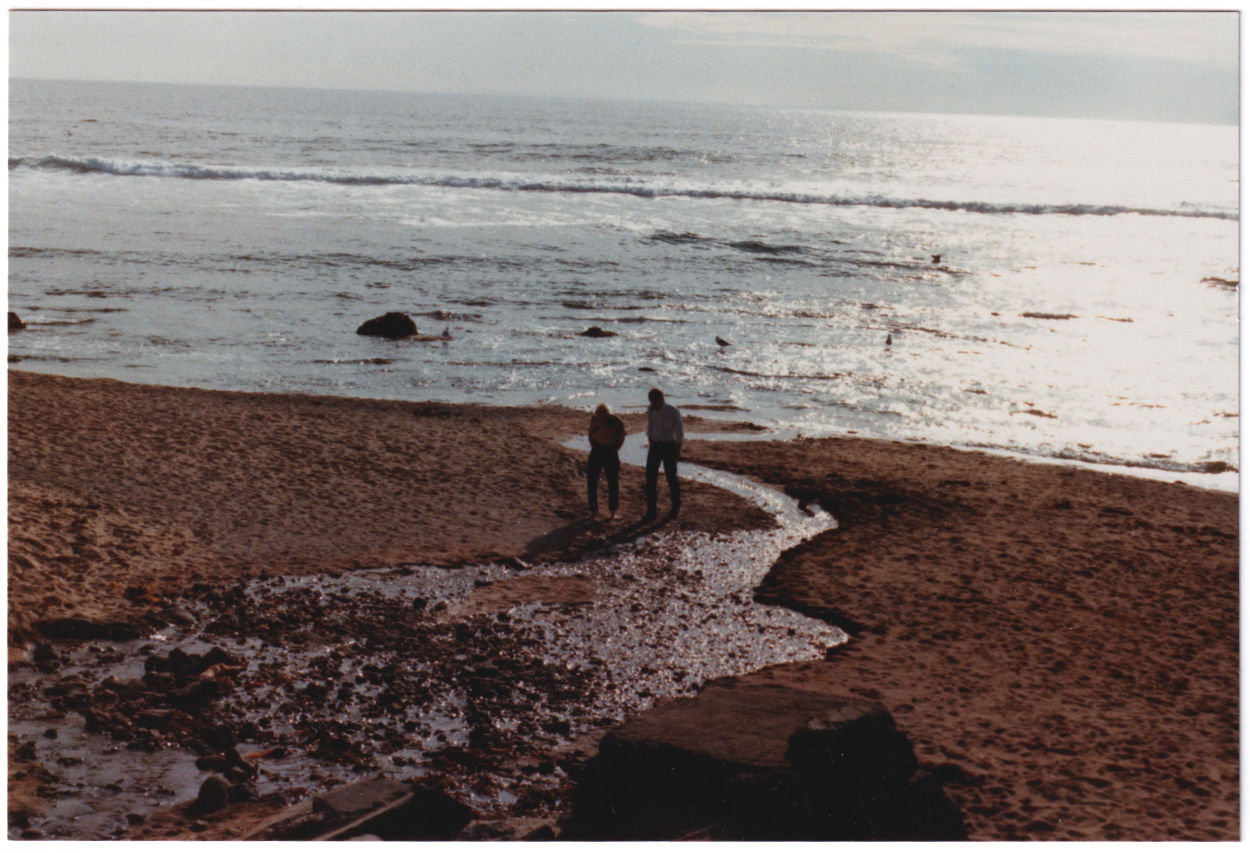Published
If I had to guess, I’d say Carson Valley

Published

Published
Thanksgiving this year was verrrrry small. We had a few options to celebrate with friends / family, but ended up just sticking to the three of us at home. I’ve been sick for almost two weeks now and was not about to give this to someone else. 💀 Plus that meant we could move it to Friday, which was helpful since I was at least feeling a little better at that point.
Published
Good enough for now, and safe enough to try
Yesterday, Gemma gave the SuperHi community a great talk on her work with Common Knowledge, a not-for-profit worker cooperative of technologists, designers, researchers and facilitators. She mentioned sociocracy, a governance framework that Common Knowledge works with to keep running smoothly.
When faced with a decision that requires consensus, the group evaluates whether or not the proposal is “good enough for now and safe enough to try”.
This was a bit of a lightbulb moment for me. There are so many groups that I have been a part of that would have been liberated by this approach.
But not even that, my own brain would be freed up a bit by this approach. I sometimes get hung up on figuring out the best solution to something, when figuring out a good solution to something might cause significantly less stress and quicker results.
I suppose when you apply it to your own decisions, it’s similar to “perfect is the enemy of good”. But that’s more vague. I like that this phrase is more direct, something you can actually apply to the decision making process.
Published
To read: “Let a 1,000 flowers bloom. Then rip 999 of them out by the roots.” by Peter Seibel
Peter Seibel was the lead of Twitter’s Engineering Effectiveness group. This 2015 essay is an extended version of a talk that he gave on the same subject. The TL;DR as he describes it: “as an industry we mostly don’t know how to do it and consequently massively under-invest in making our engineering orgs actually effective.” It’s a really interesting play-by-play of how the complexity and scale of Twitter as an app changed and grew over time.
Side note: With what’s going on at Twitter now, I’d bet my booty that the Engineering Effectiveness group is no longer of this world. Though perhaps that happened before Elon, who knows.
Shared by RS during one of our SuperHi Engineering chats.
Published
Graphic designers Kaisa Lassinaro and Maeve Redmond have designed READING LIST, a series of t-shirts that reference books, which they have selected, from the Glasgow Women’s Library catalogue. All of these books (and many more!) are free to borrow from Glasgow Women’s Library.
So the Reading List t-shirts are really cool, but I would feel like an absolute phony buying one without having read the books. One of them I’m on top of, I have A Room of One’s Own on my nightstand. BW, sorry it has taken me approximately a million years to get round to reading it. But here’s the full list to work through, nonfiction and fiction (including a bit of speculative sci fi!), from oldest to most recent.
And how cool is the Glasgow Women’s Library? It’s “the only Accredited Museum in the UK dedicated to women’s lives, histories and achievements”. Neat.
Thx, SB, for sharing this with me.
Published
The most recent edition of Blackbird Spyplane really made me laugh, about how “being yourself” can be terrible advice, especially when it comes to style.
Why does this advice irk me? The easiest way to problematize “be yourself” is to recognize that, while it contains within it a valuable kernel of truth, so does the exact opposite advice, which is also way more interesting and, ultimately, way more useful when it comes to developing a personal style: BE SOMEONE ELSE !
Yes!
I’ve been in a real rut style-wise for a long time, most particularly since B was born. I just constantly feel wrong-footed. Most of my former reference points are out, either because they don’t make sense in NYC, don’t make sense in this time (Do I mean trend-wise? Well yes and no…), or don’t make sense on my current body.
Honestly, I just need to shed a lot, donate it all. Then find some new, relevant references, copy, and gradually rebuild. It’s just very tough to actually do any shopping nowadays.
Two things I’m glad I still have? The short, black double-breasted pea coat with wide lapels from Banana Republic that I’ve had since high school (The 00s! What goes around comes around!). Added another button to the lapel to make it button up to the neck, and had it re-lined with thicker fabric. And the thick leather olive cross-body bag of unknown provenance that I got from Absolute Vintage in London (RIP) in 2010.
Edit / side-note: Years of living in the UK left me incapable of figuring out how to wear a shirt. I’d guess that I was in a sweater 85–90% of the time. Outdoors and indoors (those drafts will getcha). Somehow for the 10–15% of the year that this wasn’t the case, it was basically boiling and required flimsy things only.
So this is a long way of saying: How does one wear a shirt and look good? Layering is anathema to folks living in NYC, at least in my experience, because the radiators are on so damn high. So this means I can wear actual, nice tops again. But how? I’ve been wearing a lot of boring tees and it is making me sad.
Published

Published
So. I finally got Covid for the first time a few weeks ago.
Published

Published
So Mastodon’s getting a lot of love! If Musk’s Twitter purchase is what ends up making Mastodon a mainstream thing, then hey, silver linings I guess?
I’ve been on since 2019 as @piper@vis.social but other than a brief flurry of activity, I haven’t used it loads. The main problem was the classic “it’s not where my closest friends are”. The other issue is that I would normally enjoy browsing this sort of thing on my phone, and I didn’t love any of the apps available for iOS. That may have changed, I need to investigate.
But part of it was also that the majority of the conversation on the vis.social server wasn’t quite what I would normally engage with. At the time it was definitely the closest to my preferred content out of all of the instances I could find. But a lot of it is slightly too niche for me or over my head a bit.
At any rate, I’m going to stick with vis.social for the time being since they seem like a lovely bunch. I’m also going to start contributing financially; these things cost money because they’re not financially supported by selling our data! But I’m definitely interested in starting my own instance at some point.
For when that eventually comes around, see Simon Willison’s 5 Nov post about Mastodon, and Darius Kazemi’s unbelievably thorough runyourown.social.
It’ll be interesting to see how significant this move to Mastodon is ultimately… SB and I were talking about it and he made the very good point that it really needs to turn in to something like email at some point, something that people see as so basic that companies like Apple and Microsoft start offering Mastodon clients baked in to their operating systems by default. I think that’s probably right, or at least it would be the clearest indication that it’s here to stay.
Besides that, the vocabulary… It can be hard for people to wrap their heads around “federation”, “instances”, etc. Part of me was thinking, do people really even need to understand that? I mean an unbelievable number of people use email, but they don’t usually need to understand the difference between POP and IMAP and that sort of thing. I guess that comes down to solid email clients and providers smoothing over that abstraction though (return to point above about native Mastodon clients). We need better apps and better metaphors.